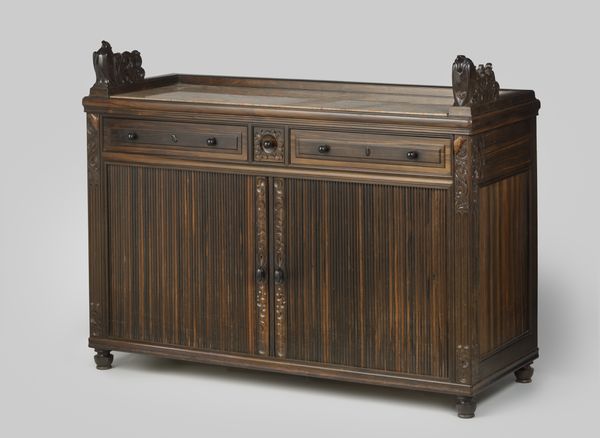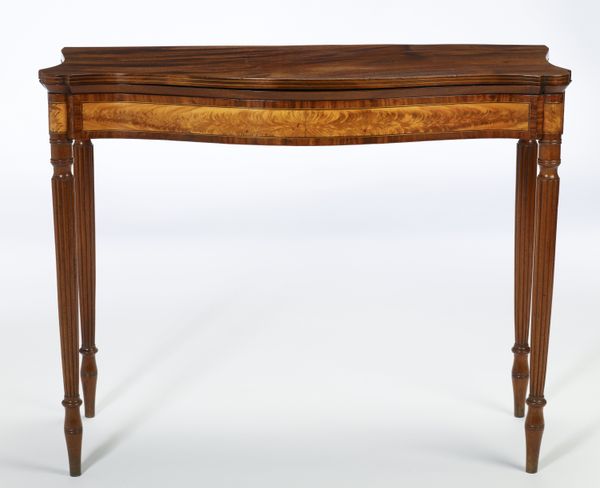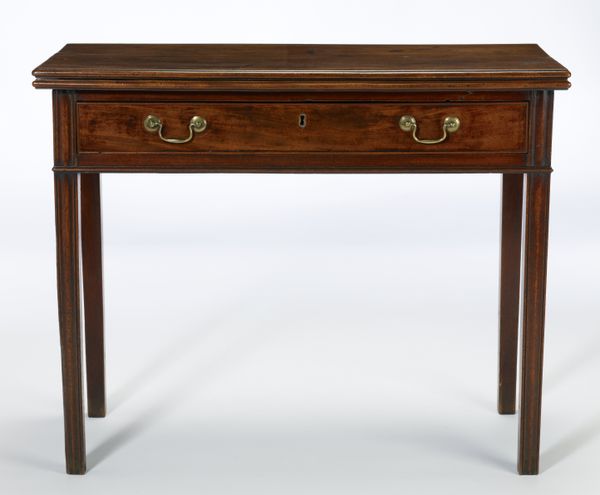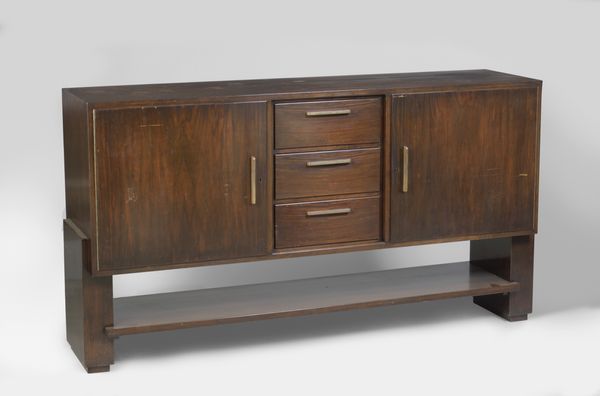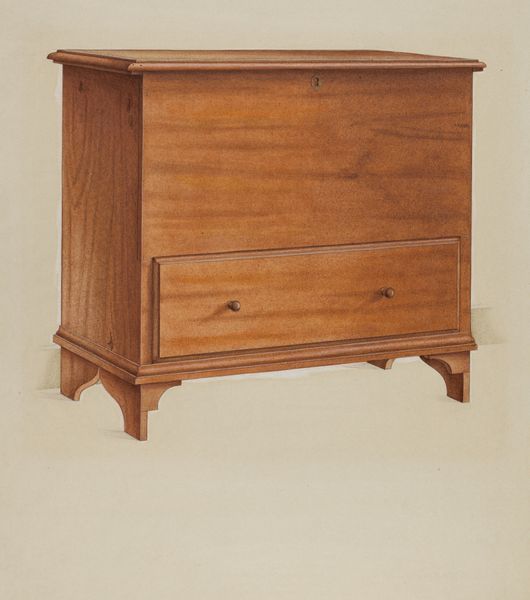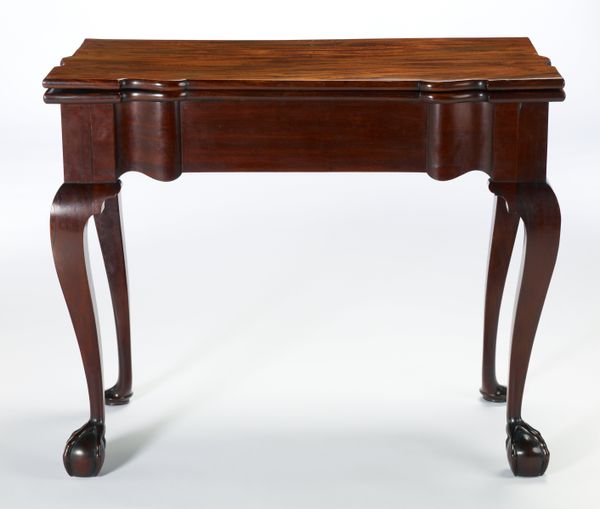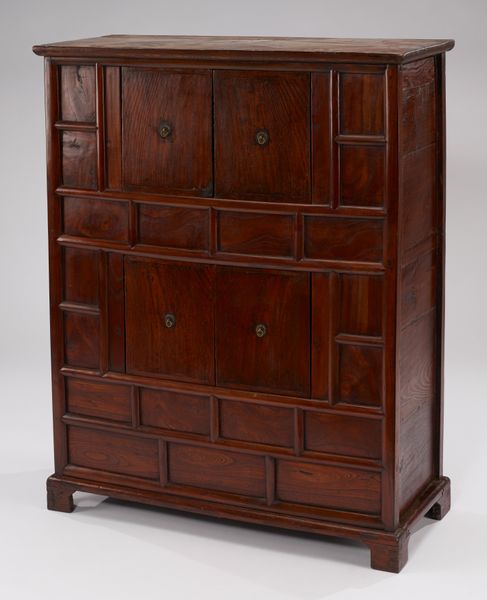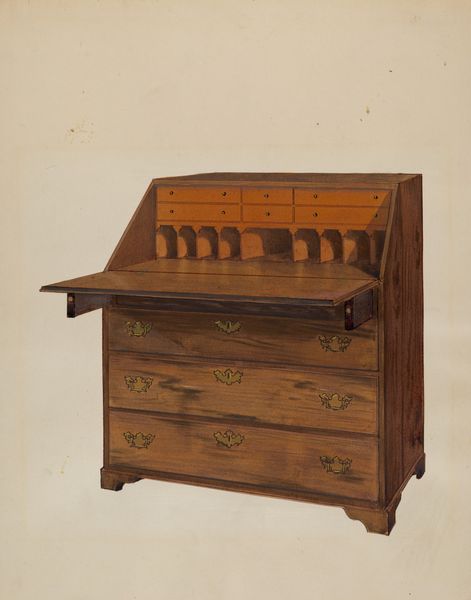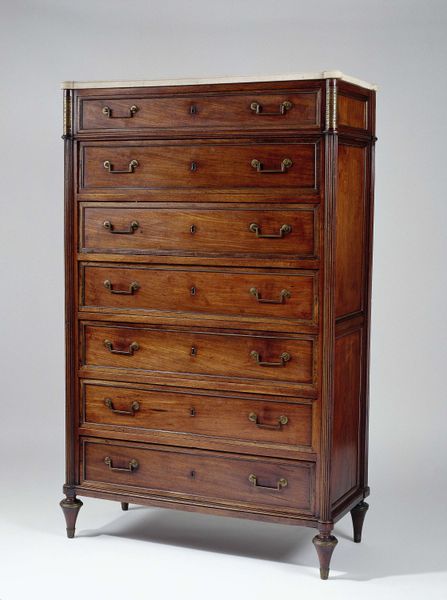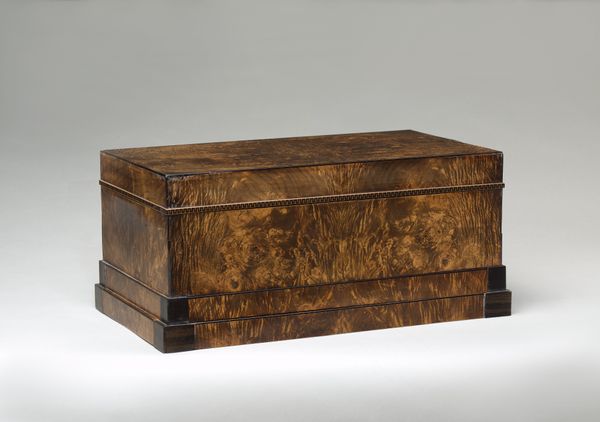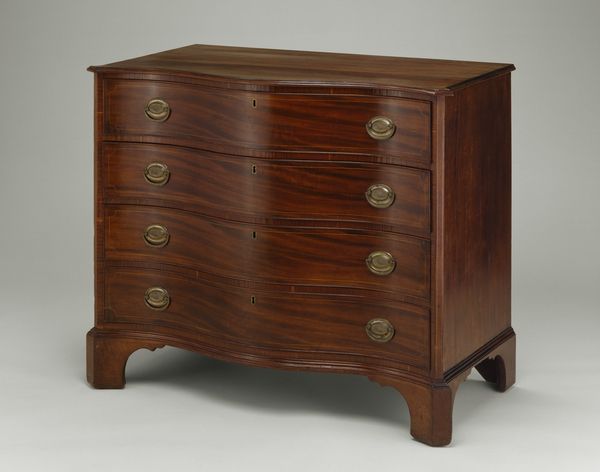
Dressoir bestaande uit een onderkast en een opstand in ronde vormen 1924
0:00
0:00
jacobpietervandenbosch
Rijksmuseum
wood
#
art-deco
#
furniture
#
wood
Dimensions: height 127.0 cm, width 220.0 cm, depth 69.0 cm, weight 142 kg
Copyright: Rijks Museum: Open Domain
Editor: We’re looking at a ‘Dressoir’— that's a Dutch term for a type of sideboard—created in 1924 by Jacob Pieter van den Bosch. It's crafted from wood, and what strikes me is how solid and grounded it feels. I mean, you could imagine this commanding presence in a dining room, couldn’t you? What historical context would shed more light on a piece like this? Curator: Absolutely. Let's consider the 1920s, shall we? Art Deco was flourishing. It was a period of immense social and political change. Mass production was reshaping society and art was trying to incorporate that changing world. In what ways do you observe the traditional and the new blended here? Editor: Well, I see a tension between the traditional craftsmanship, the evident handiwork, and the more streamlined, modern feel in the rounded edges, maybe hinting at that new aesthetic? Curator: Precisely. It wasn’t just aesthetics, though. Think about who could afford such a piece. This wasn't mass-produced for the masses; this was designed for the upper-middle class who wanted to appear modern. Does this alter your understanding? Editor: Yes, it adds layers of complexity, almost like it's a statement about a shifting social landscape expressed through furniture! The owners would be showcasing an embrace of the modern, but doing it through a traditional form like a sideboard, suggesting, perhaps, an appreciation for older ideas, right? Curator: Exactly. Now you see the power of art as social commentary and as a means of positioning oneself within society. The museum is doing the same now, placing it on display. What’s been unveiled by looking beyond the immediate appearances of it as an aesthetic object? Editor: Thinking about the original context changes everything. It’s not just a nice dresser, it’s a statement, and its current presentation in the Rijksmuseum continues that conversation! Curator: Indeed. Appreciating the piece's origins and subsequent life opens it to new interpretations.
Comments
No comments
Be the first to comment and join the conversation on the ultimate creative platform.
